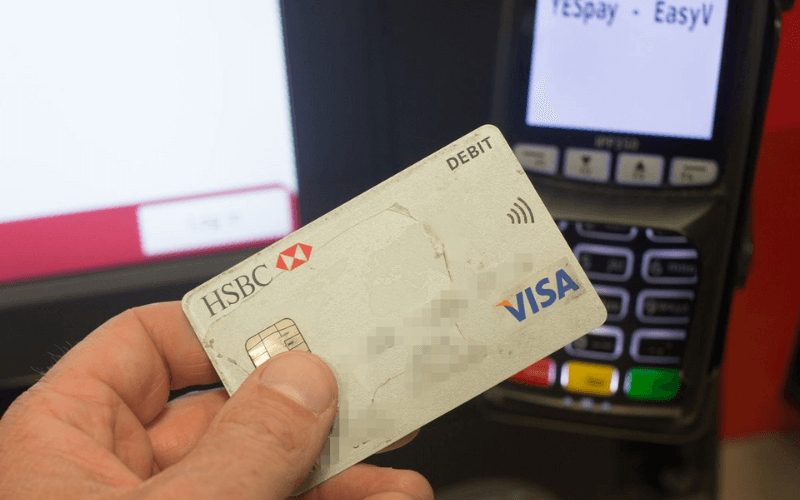Cash-only establishments are
becoming less and less prevalent, but tipping in cash remains quite common in cafes,
restaurants, beauty salons, lodgings, and numerous other sectors.
Since tips can be given in
cash, via credit card or debit card, or a tip app, comprehending precisely how different
methods impact businesses and their staff members is crucial.
There are pros and cons to
each, but ultimately all businesses that receive tips should be ready to handle
all methods, including electronic tipping.

With all of this in mind, in
this article we will examine the different aspects of cash tips and tips given
by credit cards, evaluate tip management from an employer's standpoint, and how
to equitably compensate employees for tips provided by credit cards.
Why
tips can be confusing?
Tips are a way for customers
to show appreciation for a service. If customers give a tip in the form of cash
or via credit card or leave a tip by phone to a service provider in a hotel,
fitness center, or any other establishment, the employer must keep a record of
the amount received by different employees.
There are certain pros and
cons to both cash and credit card tips, but ultimately, all businesses
gratefully accept them as additional income.
To avoid confusion, the employer
must know how to effectively handle both of these methods. It can be perplexing
because there are similarities and differences between the two methods that can
overwhelm the mind of an entrepreneur or small business owner who is new to the
field.
When
should you give cash tips?
Tipping has become
increasingly customary when purchasing a service. Whether you're dining at a
restaurant or visiting a salon, tipping allows you to express your gratitude
for the service received.
If you're unsure about when
and how to tip, this section will provide guidance.
Giving tips is a gesture
that shows appreciation for the service provider. It demonstrates your
willingness to support them. If you prefer to give cash tips for services
rendered by the staff, it's important to understand when to opt for cash tips
as opposed to credit card tips. In the United States, it is customary to give
cash tips at the following establishments:
Cafes
and restaurants
If you are someone who
enjoys exploring various eateries in your area, you should definitely carry
some convenient cash to give to the staff.
According to a report by The
Salty Waitress, most entrepreneurs involved in the hotel industry prefer cash
tips. The employees will receive the tips immediately and it provides some tax
advantages for the employer.
Coffee shops Workers at
coffee shops, baristas, providers of snacks and even baked goods anticipate a
small amount from customers to supplement their minimum wage.
Restaurants and cafes
display the typical tip jars for customers, but they may also come up with
innovative alternatives to encourage tipping for their business.
Extra
services
It is customary for an
American citizen to offer a tip in cash or use electronic tipping for the extra
services they receive from taxi drivers, valet parking attendants, restaurant
servers, etc.
The amount can range from $1
to $3 for a bag and $2 to $5 for car parking or other services at the
restaurant. Not giving a tip can tarnish your reputation among the service
provider's clientele.
Beauty
salons
Certain employers providing
salon services to offer the most up-to-date and stylish appearance may not
accept tips made by credit card. In such establishments, the staff members
should be compensated with appropriate cash tips or you can leave a tip by
phone.
🔘 Related: How much is appropriate to tip at the nail salon?
Food
delivery services
Food delivery services have
made it more convenient for individuals to enjoy their preferred snacks at
home. Popular food delivery services are now easily accessible through
applications.
Customers should consider
giving a tip in cash or provide an E tip ranging from $3 to $5 to these service
providers.
Any
service that involved monetary transactions
It is crucial in the US and
some other countries to tip the service providers for even the slightest of
services. This can incorporate the garden maintenance service providers, home
decorators and even the custodians.
So, it's always prudent to
keep a specific amount of cash at your residence in case of unforeseen services
from them. you can also use a digital tipping app such as Tipsy.
Wellness centers
It always feels great to
revitalize after an exhausting week. Hydrating and calming your skin at
wellness centers and getting a massage at the spa can give you the much-needed
relaxation.

Always, make sure to
acknowledge their services with a suitable amount of tip in the form of cash or
use a tip app.
Cash tip or credit card tip?
Money has historically been
the preferred method of receiving gratuities for service industry workers,
because it meant you were able to take the cash home at the end of the shift
rather than wait for the credit card gratuities to settle and be paid out
later.
This would then also allow
for a nightcap or two with colleagues to be paid for by said gratuities. But
with more establishments either transitioning to credit cards as the primary
form of payment, or choosing to pay staff a livable wage by placing them on
salary and eliminating tipping altogether, cash gratuities have become much
less common than they used to be.
The most important thing now
is that if you are given the opportunity to give a tip, you should do it. Fixating
on what’s preferable, cash, card or a digital tipping app, isn’t as important
as taking care of the staff that served you in the first place.
Physical currency tips hold
the same value as tips made through credit cards. However, there are a few
practical considerations that need to be addressed when handling these two
approaches to collecting tips.
For example, tips given via
a credit card need to be accurately recorded. Cash tips on the other hand are
straightforward; the customer leaves physical money in a check, container, or
directly in your possession via a tip app.
The exact amount they
provide is the exact amount you receive. Credit card tips must be accurately
inputted into a point of sale (POS) or other payment processing system to avoid
charging the customer incorrectly.
Credit card receipts must be
kept. In a similar vein, a cash tip is a resolved matter. Once the transaction
is complete, so is your responsibility to the customer.
For credit card tips,
businesses are generally responsible for retaining signed credit card receipts
for at least 18 months as protection against chargeback claims.
And lastly, it is more
challenging to monitor and report cash tips. Despite the legal concerns, the
truth is that employees are more likely to pocket cash tips without accurately
reporting them.
Encourage your employees to
utilize your payment processing software to track credit card and cash tips for
greater precision.
🔘 Read More: How to tip in European countries
How to leave a tip using a credit card?
Providing cash gratuities
and credit card tips can be perplexing for someone who is new to handling them.
When you are planning to
give leave a tip with a credit card, you should follow these steps:
- Request the final
invoice. Ask the service provider to provide a detailed invoice for the
services rendered. Examine the pre-tax total to determine the amount of the
tip.
- Review the amount
before taxes are added to the invoice. Typically, for a restaurant in the
United States, the customary gratuity amount for the meal is considered to be
approximately 15% - 20% of the pre-tax invoice.
- Calculate the amount
you want to give as a tip. Once you have mentally figured out how much you want
to tip for the service, you should write down the tip amount on the customer
copy of the receipt for your own records. The other copy of the receipt is
usually kept by the small business owner.
- Add the tip amount to
your bill. At the end, add the amount you want to tip with your credit card
next to the line where the total amount is mentioned.
- Write your full name
and sign. It will only be charged after you have completed all of this.
- Make a note of the
total amount. It is always a good idea to keep a record of the tips made with
transactions for future reference to your transaction records so you are not
overcharged for the services.
Paying
Credit Card Tips to Staff
There is one primary subject
when it comes to compensating staff for credit card transactions which we have
not yet discussed: retaining credit card handling charges.

Interchange fees imposed by
credit card companies and by merchant providers may both be subtracted from an
employee's gratuities.
However, there are specific
rules to ensure this practice is lawful. Handling charges may only be
subtracted from the gratuity section of the bill, not the total of the
processing fees accumulated by the business.
Every state has its own
regulations concerning tip remuneration. California, Maine, and Massachusetts all
disallow this particular form of tip subtraction.
Administrative costs can
only be lawfully subtracted if the employee will still be receiving the minimum
wage after the deduction.
Companies can certainly
handle this by employing the strategy of administrative fee subtraction. The
issue then arises of whether this strategy is worthwhile despite the
possibility of irritating employees and/or the potential legal consequences,
whether intended or not.
There is no definitive
answer to this question, but employees would be wise to take into account all
variables in the equation.
Why
is a tip management system necessary?
An important problem that
employers encounter with cash tips and credit card tips is the precise
collection and reporting of them.
A small business owner may
find it extremely challenging to maintain accurate records initially. During
such times, utilizing a top-notch POS system guarantees that all the staff
members can easily report the tips they have received in a prompt manner.
This system proves to be
beneficial for both cash tips and credit card tips. It can also be used to
report tips received through debit cards or digital tipping apps.
The utilization of a
high-quality system ensures accurate reporting of cash tips and credit card tips.
It also provides employees with prompt access to reports on the tips they have
received.
These reports, which are
easy to comprehend, can be reviewed by employees at any given time.
Failure by employers to
report the tips received by employees as additional wages can even result in
substantial penalties imposed by the IRS.
Conclusion
With mobile wallets and QR
code readers becoming the focal point in nearly every nation and sector,
providing gratuities presents a significant quandary for those with a generous
disposition.
This frequently leads to this
question: should you tip in cash, use a credit card or a tip app?
Despite cash gratuities
diminishing in prominence in contemporary society, they are still regarded as
the principal means for tipping in restaurants, salons, bars, and spas.
While cash gratuities and
credit card gratuities may both exist, comprehending how these distinct
gratuity methods impact the staff and, consequently, the business is equally
vital.
The majority of people
around the world are expected to give a tip either by using their credit cards
or in the form of cash for the services they have received.
Tipsy is a great digital
tipping app that helps you leave a tip by phone and show your appreciation of a
good service.